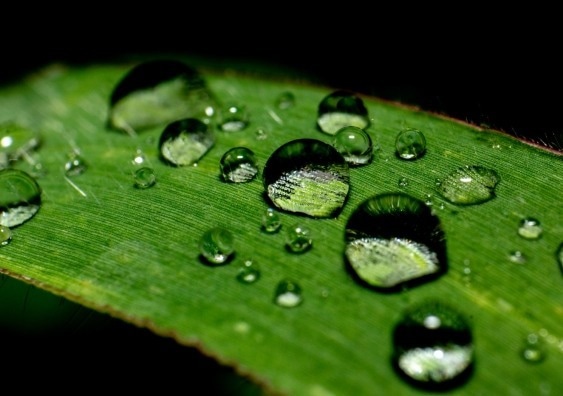Does a sieve with more pores permit more liquid to flow through? According to material scientists, with regard to their recent discovery, this apparently simple question might have a surprising answer at the nanoscale. Also, it can have significant consequences on energy storage, water filtration, and hydrogen production.
 Surface tension contributes to the unusual interaction of water with the nanoscopic graphene oxide pores. Image Credit: Shutterstock.
Surface tension contributes to the unusual interaction of water with the nanoscopic graphene oxide pores. Image Credit: Shutterstock.
Scientists from UNSW Sydney, University of Duisburg-Essen (Germany), GANIL (France), and Toyota Technological Institute (Japan) investigating Graphene Oxide (GO) membranes have found that the contradiction can happen at the nanoscopic level. The study is reported in Nano Letters, and it shows that the sieve’s chemical environment and the liquid’s surface tension play a remarkably significant role in permeability.
They noticed that higher water permeability is not necessarily led by a density of pores — put differently, having more small holes does not always permit water to flow through at the nanoscale. The research was funded by the European Union and the Humboldt Research Foundation funding. It gives new insights into the mechanisms that direct water flow via GO membranes.
If you create more and more holes in a sieve, you expect it to become more permeable to water. But surprisingly, that is the opposite of what happened in our experiments with graphene oxide membranes.
Rakesh Joshi, Study Senior Author and Associate Professor, School of Materials Science & Engineering, UNSW Science
Altering the Chemical Environment
GO is an ultra-thin carbon form that has been established as a promising material for water purification. A single layer of carbon atoms attached with oxygen and hydrogen atoms makes up the chemical composition. If LEGO bricks are scattered on the floor, the carbon atoms would be the floor, and the LEGO bricks would be the oxygen and hydrogen atoms.
Molecules could have the so-called “functional groups” in chemistry, which are either hydrophilic (water-attracting) or hydrophobic (water-repelling). The pores present in graphene could also be either hydrophilic or hydrophobic.
Surprisingly, more important for the water flux (flow of water through a membrane) isn’t the number of pores, but whether the pores are hydrophobic or hydrophilic. That’s very unexpected as the GO layers are only one atom thick. One expects the water to just pass through the pores, no matter if they attract or repel water.
Tobias Foller, Study Lead Author and PhD Candidate, UNSW Scientia
In the case of hydrophobic pores, the researchers exhibited a complete blockage of water, despite the existence of several pores present in the GO filters that are used in the study.
With filters, you usually expect more water flow with more holes. But in our case, where we have more holes, water flow is lower, and that’s due to the chemical nature of the graphene oxide holes which are in this case water-repelling.
Marika Schleberger, Study Co-Author and Professor, University of Duisburg
Unusual Effects of Surface Tension
Surface tension also adds to the water interaction along with the GO pores, according to researchers. Surface tension arises because water-like molecules want to stick together. The bonds among water (cohesion) and neighboring solid surfaces (adhesive force) could act to move the water when confined in a considerably tiny space. This describes the way trees could conquer gravity to consume water from their roots, through their capillaries, to their leaves.
In GO membranes, where pores made at the scale of one-millionth of a millimeter or even lesser are the “capillaries” here, the same forces that actually let water soar through tree capillaries stop it from flowing via membrane pores.
“When you confine water in the smallest possible capillaries – just the size of a few atoms – the water molecules attract themselves so much they form a tight network. Undisturbed, this network is so strong that it doesn’t allow the molecules to be released and pass through the sieve, even if you increase the number of pores,” states Mr. Foller.
Ultrafine sieves made of different materials have a vast range of applications. The scientists state that their results will aid researchers in fine-tuning liquid transport in atomic sieves and can further progress in areas such as extremely accurate water filtration systems.
“By understanding which parameters will increase or decreases water flux, we can optimize many possible applications of graphene oxide for water purification, energy storage, hydrogen production, and more. We hope other engineers and scientists can use this new knowledge to improve their own devices and lead to new developments in the future,” concluded Mr. Foller.
Journal Reference:
Foller. T., et al. (2022) Mass Transport via In-Plane Nanopores in Graphene Oxide Membranes. Nano Letters. doi.org/10.1021/acs.nanolett.2c01615.